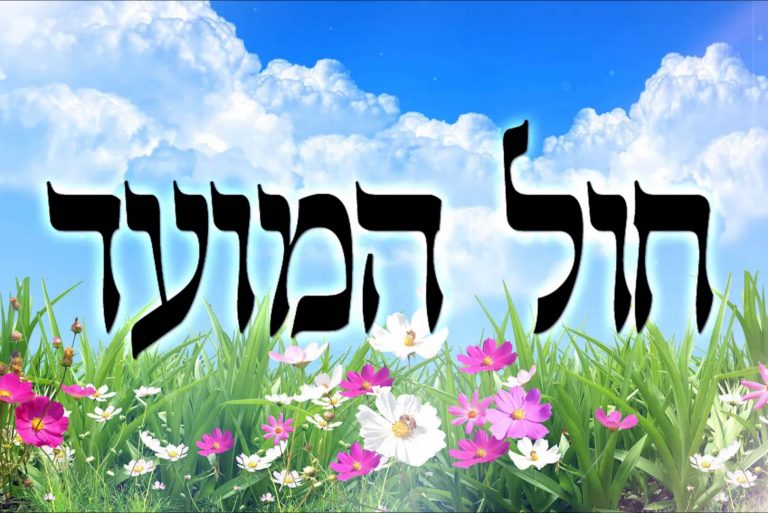The morning Torah reading of Shabbat Chol HaMoed consists of selected portions from Parshas Ki Sisa. The conclusion of the kriah summarily addresses the Shalosh Regalim, and this would seem to be the relevance of the reading to the day. However, the first six aliyos have nothing to do with Yom Tov; rather, they deal with Moshe’s supplication to Hashem to forgive the Jews for the Chet Ha-egel and the grand rapprochement between God and His people. Is there thus any other connection between the Torah reading and the Moed?
 Shabbos Chol HaMoed (as well as Shabbos which coincides with Yom Tov) is unique, for the character of the day is not just that of Shabbos as its own day alongside that of Moed, in which the two days and their respective themes exist on their own. On the contrary, when Shabbos and Moed are joined, they fuse to create a new, unparalleled kedushah and status. Please allow me to explain.
Shabbos Chol HaMoed (as well as Shabbos which coincides with Yom Tov) is unique, for the character of the day is not just that of Shabbos as its own day alongside that of Moed, in which the two days and their respective themes exist on their own. On the contrary, when Shabbos and Moed are joined, they fuse to create a new, unparalleled kedushah and status. Please allow me to explain.
Shabbos is symbolized by its coming to the Jews. We go out to greet the Shabbos Queen, who is already on her way to us, and we welcome malachim to our homes on Friday night. Yom Tov is quite the opposite, for it requires that we ascend to Yerushalayim and enter the realm of the Shechinah. Rather than God sending his kedusha our way, we must go up to it and greet Hashem at His place.
Thus, when Shabbos and Yom Tov coincide, we rise and approach God (in the kedusha of Yom Tov), and He also comes to us (Shabbos). The closeness between Hashem and the Jew which is precipitated is qualitatively different than that which is created by the separate kedushos of Shabbos or Yom Tov on their own. It is, rather, a new closeness, and this closeness is mirrored precisely by the grand rapprochement between God and the Jews in Parshas Ki Sisa, when Hashem agrees to forgive His people and share with them a relationship heretofore unheard of.
It is based on the above that we reserve the public reading of Shir Hashirim for Shabbos-Pesach and Kohelet for Shabbos-Sukkot/Shmini Atzeres, for these megillos reflect on our relationship with Hashem and provide deep insight into His avodah as depicted by each Yom Tov. Thus, it is specifically on these Shabbos/Yom Tov days of special closeness between Hashem and Bnei Yisroel that we are able to have a greater understanding of our relationship with Hashem and immerse ourselves in the deeper avodah message of the Yom Tov.

